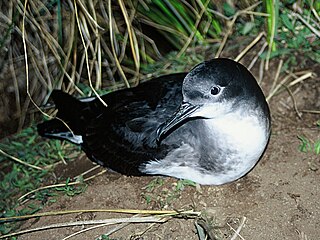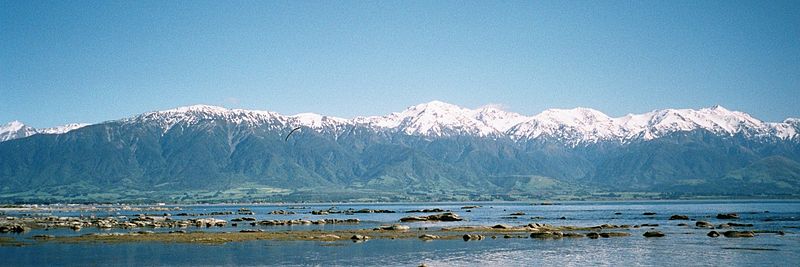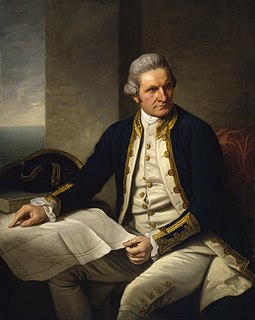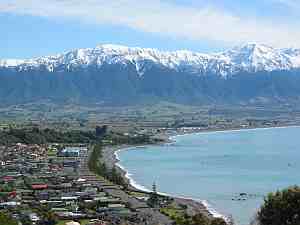
The Acheron River is a river in the South Island of New Zealand, in Marlborough and flows into the Clarence River. It flows southwest and then east for a total of 60 kilometres (37 mi), joining the Clarence at the southern end of the Inland Kaikoura mountains. The Alma and Severn Rivers flow into the Acheron before it joins the Clarence.
The Tweed River is a minor river located in the Marlborough district on the South Island of New Zealand.

The Waiau Toa / Clarence River is on northeast South Island of New Zealand. It is 230 kilometres (140 mi) long, which makes it the eighth longest river in New Zealand.

Tapuae-o-Uenuku, formerly Mount Tapuaenuku, is the highest peak in the northeast of New Zealand's South Island. The name translates from Māori as "footprint of the rainbow", though is usually regarded as being named after Chief Tapuaenuku.

The Conway River is part of the traditional boundary between the Canterbury and Marlborough regions in the South Island of New Zealand.
The Charwell River is a river in the northeast of New Zealand's South Island. Its headwaters are in the Seaward Kaikoura Ranges and it feeds into the Conway River, the traditional boundary between Marlborough and Canterbury. Sheep farming has taken place in the Charwell River's valley.

The Hope Fault is an active dextral strike-slip fault in the northeastern part of South Island, New Zealand. It forms part of the Marlborough Fault System, which accommodates the transfer of displacement along the oblique convergent boundary between the Indo-Australian Plate and Pacific Plate, from the transform Alpine Fault to the Hikurangi Trench subduction zone.

Hutton's shearwater or kaikoura tītī is a medium-sized ocean-going seabird in the family Procellariidae. Its range is Australian and New Zealand waters, but it breeds only in mainland New Zealand, in just two remaining alpine colonies in the Seaward Kaikoura Range. Because six other colonies have been wiped out by introduced pigs, a protected artificial colony has been established near the town of Kaikoura.

State Highway 7 is a major New Zealand state highway. One of the eight national highways, it crosses the Southern Alps to link the West Coast Region with Canterbury and to form a link between the South Island's two longest highways, State Highway 1 and State Highway 6. Distances are measured from east to west with the major junction list going from east to west.
The Bluff River is a river of New Zealand. It is in Marlborough and is a tributary of the Clarence River. The Bluff River flows south for 10 kilometres (6 mi) from the slopes of Mount Major in the Inland Kaikoura Range. Confusingly, the Bluff Stream, another tributary of the Clarence, follows a largely parallel course 5 kilometres (3 mi) to the east.
The Dillon River is a river of the Marlborough Region of New Zealand. It arises in the Inland Kaikoura Range near Carters Saddle, and flows south-west for 28 kilometres (17 mi) to join with the upper Clarence River 20 kilometres (12 mi) northeast of Hanmer Springs. The river's course lies largely parallel with that of the Acheron River, which lies 8 kilometres (5 mi) to the west. The river was named after Constantine Augustus Dillon, who owned a sheep run near the Omaka River.
The Gloster River is a river in the Marlborough region of New Zealand. It arises on the northern slope of Dillon Cone in the Inland Kaikoura Range and flows north, then south-east and east to join the Clarence River which eventually exits into the Pacific Ocean.

The Hapuku River is a river of New Zealand. It begins in the Seaward Kaikoura Range and flows south-east to enter the South Pacific at Hapuka, between Clarence and Kaikoura. The name comes from the Māori word Hapuku or Hapuka, a deep-water marine fish.
The Kahutara River is a river of New Zealand's South Island. It flows southeast from the Seaward Kaikoura Range, reaching the Pacific Ocean at the tiny settlement of Peketa, 7 kilometres (4 mi) southwest of Kaikoura.

The Kowhai River is a river of the northeast of New Zealand's South Island. It flows south from the slopes of Manakau in the Seaward Kaikoura Range, turning southeast as it reaches its narrow coastal plain. The Kowhai River flows to the ocean to the west of the Kaikoura Peninsula, three kilometres west of the town of Kaikoura.
The Waimangarara River is a river of the Marlborough Region of New Zealand's South Island. It flows generally south from its origins in the Seaward Kaikoura Range to reach the Pacific Ocean 5 kilometres (3 mi) north of Kaikoura.

Manakau is a mountain peak in the Canterbury region of New Zealand's South Island. At 2,608 metres, it is the highest peak of the Seaward Kaikoura Range.
The Richmond temperate forests are an ecoregion covering the northern part of New Zealand's South Island.

















